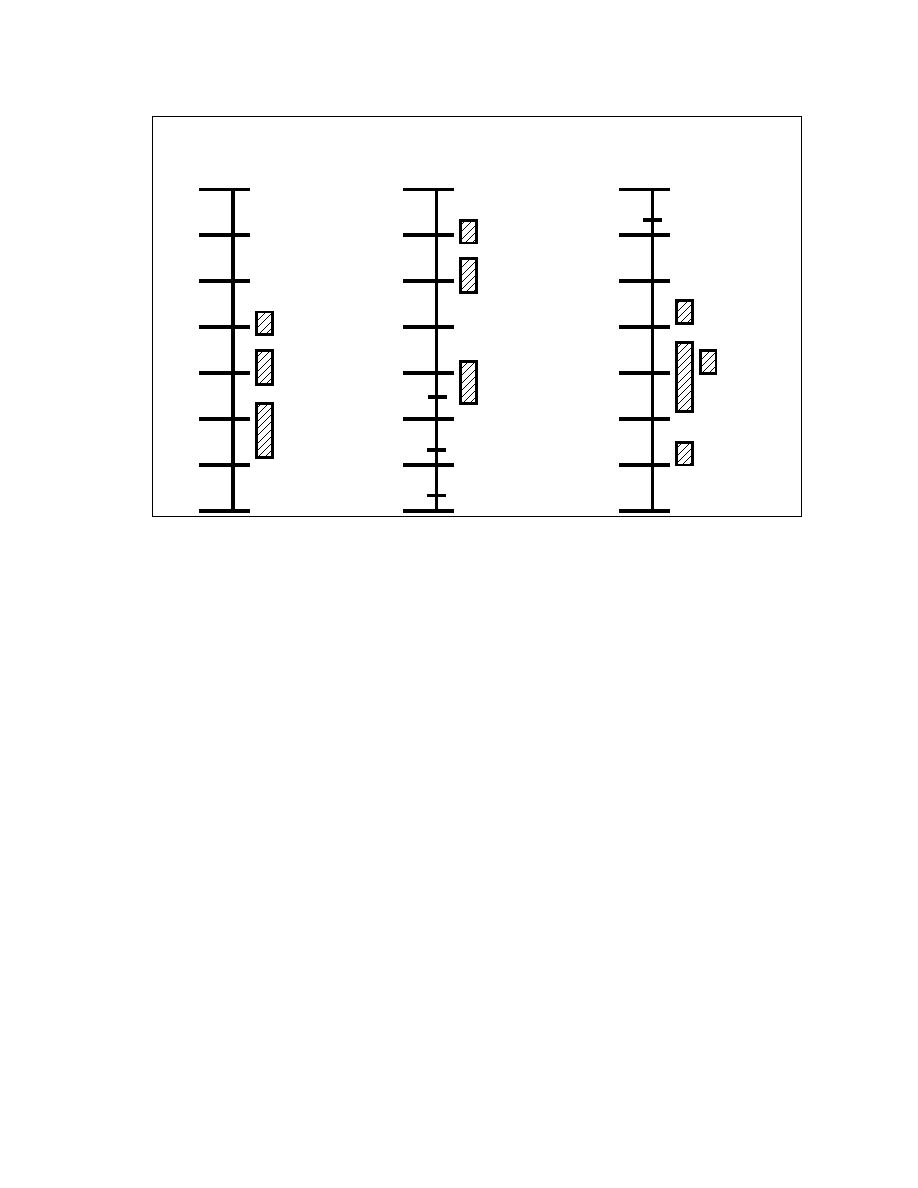 |
|||
|
|
|||
|
|
|||
| ||||||||||
|
|  DOE-HDBK-1129-99
Heavy Water
Light Water
Environmental
Region
Region
Levels
(Ci/L)
(Ci/L)
(Ci/L)
106
10-1
10-7
U.S. Drinking
Water Limit
Boiling Water
105
10-2
10-8
Reactor
Coolant
Pressurized
Water
104
10-3
10-9
Reactor
Coolant
DOE Site Releases
Typical DOE HTO
103
10-4
10-10
Aqueous Glovebox
Portable System Lower
Waste
Limit of Detection (LLD)
Three Mile Island
Sea Water
Canadian Heavy
Accident-Generated
102
10-5
10-11
Water Reactor
Water
River Water
DOE Derived Concentration
Guide Limit
101
10-6
10-12
DOE Heavy Water
NRC Part 20
Reactors
Release Limit
Canadian Drinking
Laboratory LLD
Water Limit
100
10-7
10-13
U.S. Drinking
Water Limit
10-1
10-8
10-14
FIGURE 2-3. Comparison of aqueous tritium levels found in the nuclear industry
2.5.2 Identity of Common Forms
Tritium is usually supplied in gaseous or uranium tritide form. Other forms are also available but
are not in common use for bulk shipment.
2.5.2.a Gas
In gaseous form, tritium is usually supplied at a purity of 90 to 95 percent tritium (99 percent in
research applications) with deuterium and protium as the primary impurities. 2.5.2.b Metal Tritides
The use of metal tritide storage beds is one of the most convenient ways of handling tritium. The
metal tritide beds have different operating parameters and characteristics, and there are
advantages and disadvantages in use of the different materials.
2.5.2.b(1) Uranium
Uranium is currently the most useful material for general-purpose tritium storage beds. The
equation form for the dissociation pressure of uranium tritide, deuteride, and hydride for the
pressure in millimeters of mercury is, Pmm = 10 (-A/T +B) , where A and B are parameters listed in
Table 2-3. Westinghouse Savannah River Company (WSRC) has determined that in the hydride
transport vessel (HTV), for a uranium to tritium ratio of 1:2.9 in the HTV vessel, the equation is Patm
= 10 (-4038.2/T + 6.074) .
At room temperature, tritium in the presence of uranium powder forms uranium tritide. The tritium
partial pressure in the bed is very low. As a result, at room temperature the bed acts as a vacuum
9
|
|
Privacy Statement - Press Release - Copyright Information. - Contact Us |